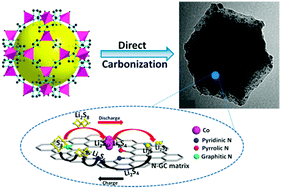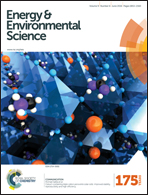A novel synergistic composite with multi-functional effects for high-performance Li–S batteries†
Abstract
The rechargeable lithium–sulfur battery is regarded as a promising option for electrochemical energy storage systems owing to its high energy density, low cost and environmental friendliness. Further development of the Li–S battery, however, is still impeded by capacity decay and kinetic sluggishness caused by the polysulfide shuttle and electrode/electrolyte interface issues. Herein, a new type of metal–organic-framework-derived sulfur host containing cobalt and N-doped graphitic carbon (Co–N-GC) was synthesized and reported, in which the catalyzing for S redox, entrapping of polysulfides and an ideal electronic matrix were successfully achieved synchronously, leading to a significant improvement in the Li–S performance. The large surface area and uniform dispersion of cobalt nanoparticles within the N-doped graphitic carbon matrix contributed to a distinct enhancement in the specific capacity, rate performance and cycle stability for Li–S batteries. As a result of this multi-functional arrangement, cathodes with a high sulfur loading of 70 wt% could operate at 1C for over 500 cycles with nearly 100% coulombic efficiency and exhibited an outstanding high-rate response of up to 5C, suggesting that the S@Co–N-GC electrode was markedly improved by the proposed strategy, demonstrating its great potential for use in low-cost and high-energy Li–S batteries.


 Please wait while we load your content...
Please wait while we load your content...